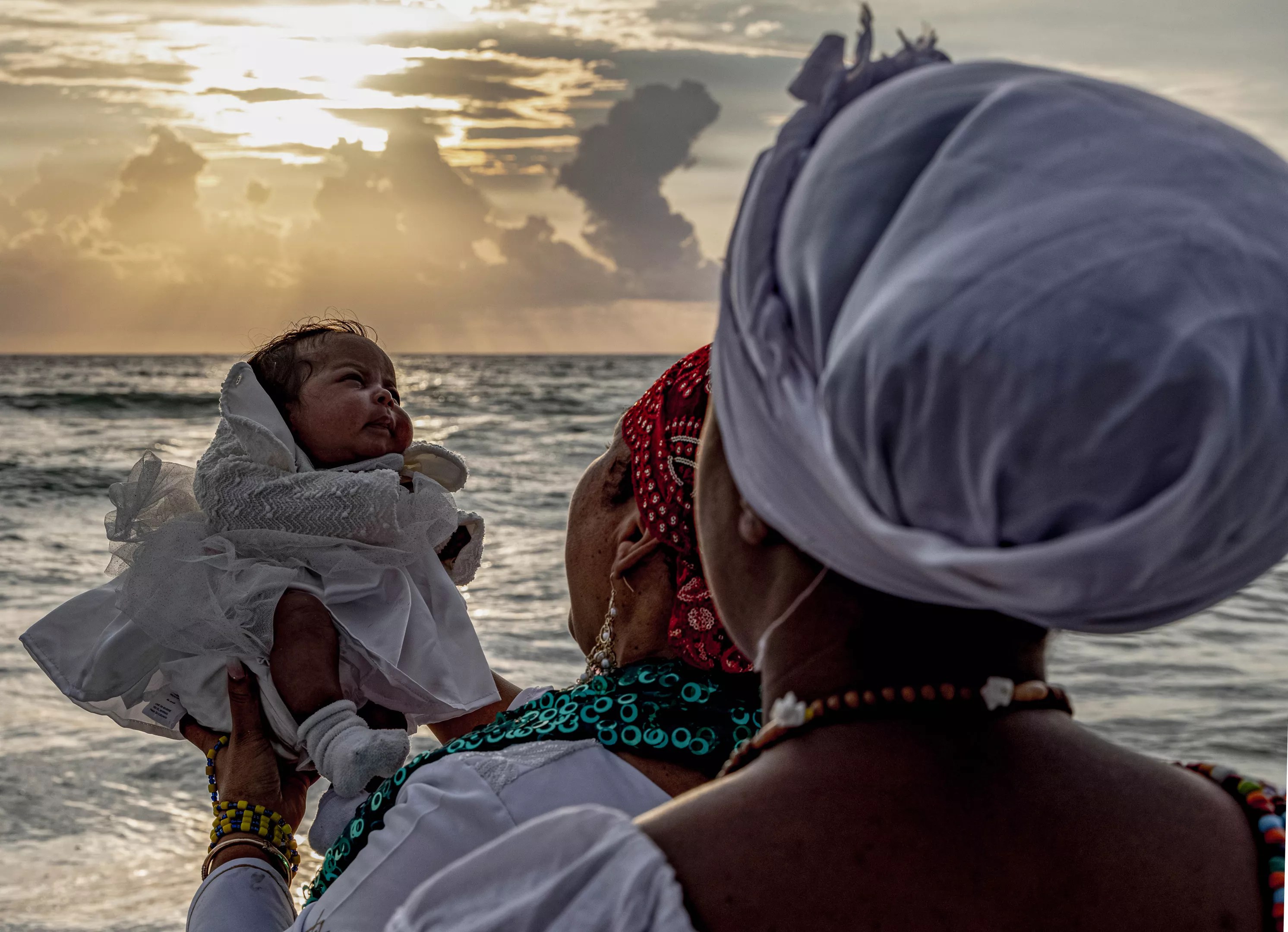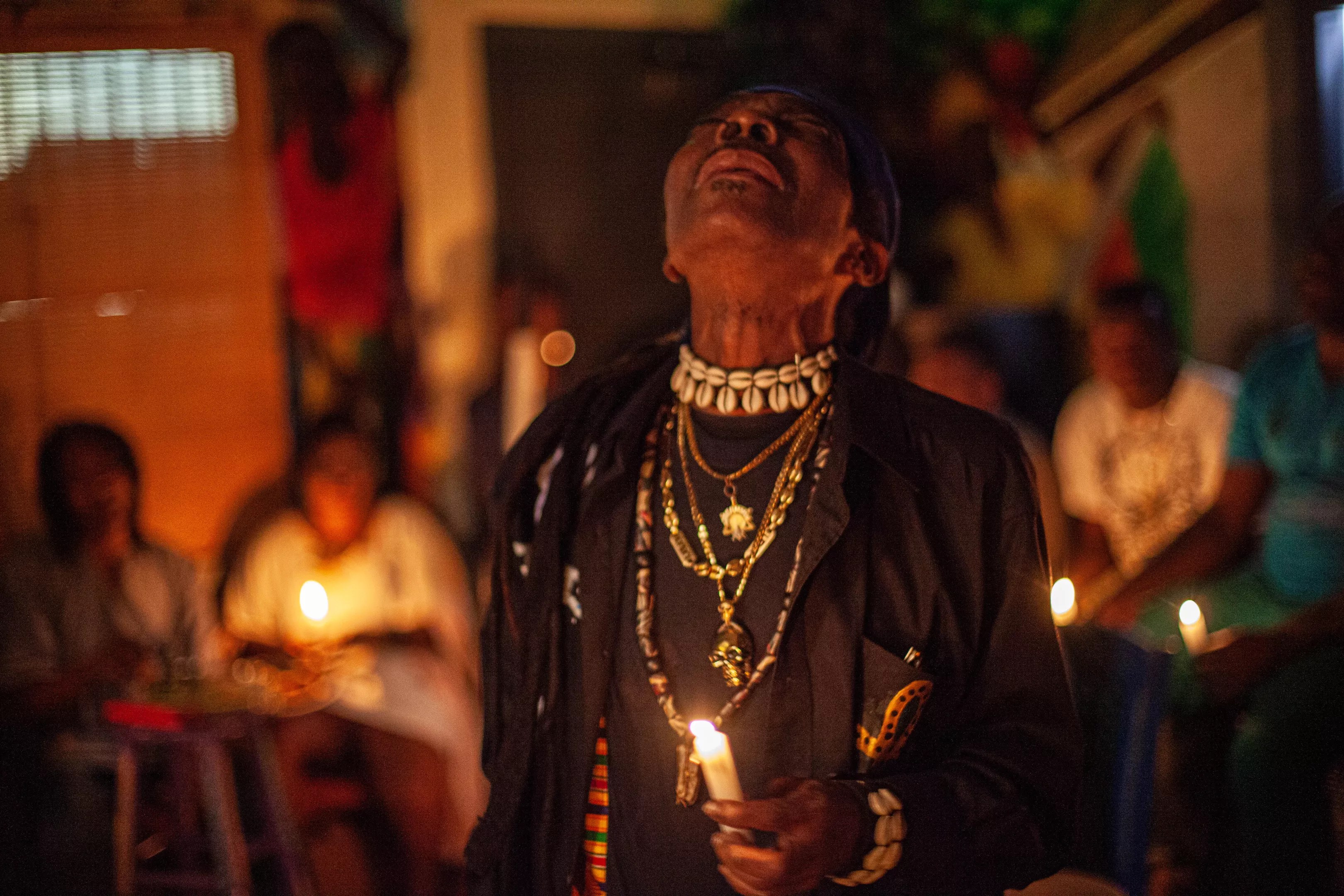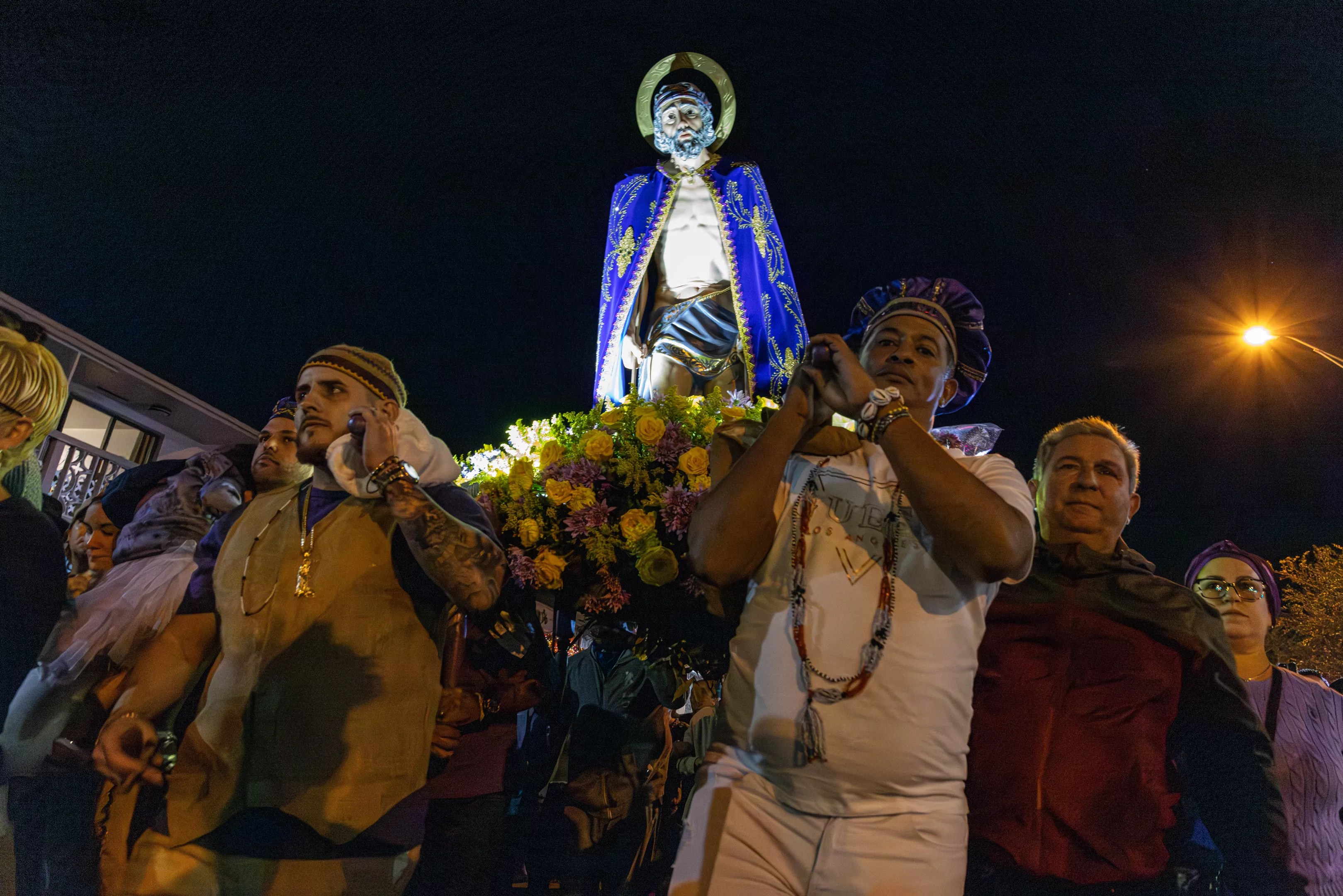
Photo by Woosler Delisfort/HistoryMiami Museum

Audio By Carbonatix
When Little Haiti photographer Woosler Delisfort began documenting Miami’s Black Lives Matter protests during the pandemic, he was doing more than capturing history. He was embarking on a deeply personal and transformative journey.
As the current HistoryMiami Museum BIPOC photography fellow recalls with New Times, the chaos of those times left him grappling with heavy questions: Where do we go to heal? Where do we go to pray? What is our sanctuary?
That moment of reflection birthed “Sanctuary: Our Sacred Place,” a photography exhibit that opened this summer that explores the spiritual and religious practices of Miami’s Indigenous, African, and Caribbean communities. On view at HistoryMiami through January 26, 2025, the exhibit takes center stage during Miami Art Week, countering the city’s glitzy art spectacles.
The Journey to Sanctuary
This year, make your gift count –
Invest in local news that matters.
Our work is funded by readers like you who make voluntary gifts because they value our work and want to see it continue. Make a contribution today to help us reach our $30,000 goal!
Delisfort’s path to this project is as intricate as the images he creates. Though he had spent more than a decade documenting spirituality – often through the lens of women practicing Haitian vodou – the fellowship challenged him to broaden his scope.
“I decided to begin to document the religion, also the spirituality side of South Florida,” Delisfort says. “Not only in the Ifa temple, not only in the Haitian vodou temple, but what about in a church? What about someone’s home? The mosque? What does that look like?”
Delisfort’s dedication shines through in his methodical approach. Gaining trust within these communities required patience, respect, and time. In particular, he spent two months attending Ethiopian Orthodox Church services every Sunday before even lifting his camera.
“It’s all about getting that trust,” he explains. “If I don’t get the form of trust, that’s hard for me to document. I’m also telling my story. Because what you’re looking at is a self-portrait of myself. It’s me telling my own personal spiritual journey.”

Woosler Delisfor’s work draws spiritual parallels between Haitian vodou and Mexican Day of the Dead traditions.
Photo by Woosler Delisfort/HistoryMiami Museum
Reframing Narratives
Delisfort’s work actively pushes back against long-held stereotypes about Black spirituality. He points to the white gaze that often depicts Haitian vodou and Ifa in negative or sensationalized ways – blood rituals, possession, and the like.
“I got tired of the negative position people had when it came down to the practice,” he shares. “Someone came to me and said, ‘You make vodou look so beautiful.’ Vodou is beautiful. I see community because it is a community.”
Delisfort’s approach isn’t about convincing skeptics or defending African spirituality. Instead, he focuses on creating space for self-reflection and acceptance by inviting viewers to consider their own spiritual connections.
“My grandmother always used to tell me to never debate on anyone’s happiness,” Delisfort shares. “Whatever connects with you, then that’s what connects with you. If the way your ancestors were practicing thousands of years ago doesn’t connect with you, then that’s something you have to deal with within yourself.”
Through his lens, Delisfort focuses on joy, connection, and the everyday sacredness of spiritual practice. His images invite the public to see these traditions not as exotic or frightening but as integral, life-affirming parts of Miami’s cultural fabric.
Beyond the Glamour
For Delisfort, the fellowship with HistoryMiami Museum provided funding and a platform to tell Miami’s story in a way that challenges its sun-soaked, nightlife-driven image.
“Most people don’t see how Miami really is,” he says. “We see Miami as the glamour, South Beach, and everything else. But this is also Miami, too. This is where we go when we’re stressed out. This is our form of sanctuary.”
The exhibit doesn’t limit itself to one interpretation of sanctuary. By showcasing spaces ranging from churches to private homes, Delisfort reminds us that everyone’s idea of a sacred place is unique – and valid.

Woosler Delisfort captured the devotion and cultural syncretism of St. Lazarus worshippers in Hialeah.
Photo by Woosler Delisfort/HistoryMiami Museum
A Legacy of Connection
Sanctuary continues HistoryMiami’s mission to uplift underrepresented voices in the arts. The museum’s BIPOC photography fellowship, established with the support of the Jorge M. Pérez Family Foundation, aims to address gaps in representation while fostering a deeper understanding of Miami’s diverse communities. Delisfot’s project is a testament to what’s possible when artists are given the resources and trust to tell their stories authentically.
As Miami Art Week draws crowds worldwide, Delisfort’s work stands out for its quiet power. It asks viewers to look beyond the city’s surface and into its spiritual heartbeat.
“Religion, spirituality – it all precedes time,” Delisfort says. “The fact that we’re still holding on to the language, certain songs, dance – how we still hold on to that.”
For those seeking a moment of introspection, “Sanctuary” is a strong alternative to the Art Week frenzy. Delisfort’s photographs don’t just capture moments; they honor the resilience and beauty of communities that find sacredness in the everyday.
“Sanctuary: Our Sacred Place.” On view through January 26, 2025, at HistoryMiami Museum, 101 W. Flagler St., Miami; 305-375-1492; historymiami.org. Tickets cost $8 to $15; admission is free for children 6 and under. Delisfort will be hosting a tour of his exhibition 11:30 a.m. to 12:30 p.m. Friday, December 6,